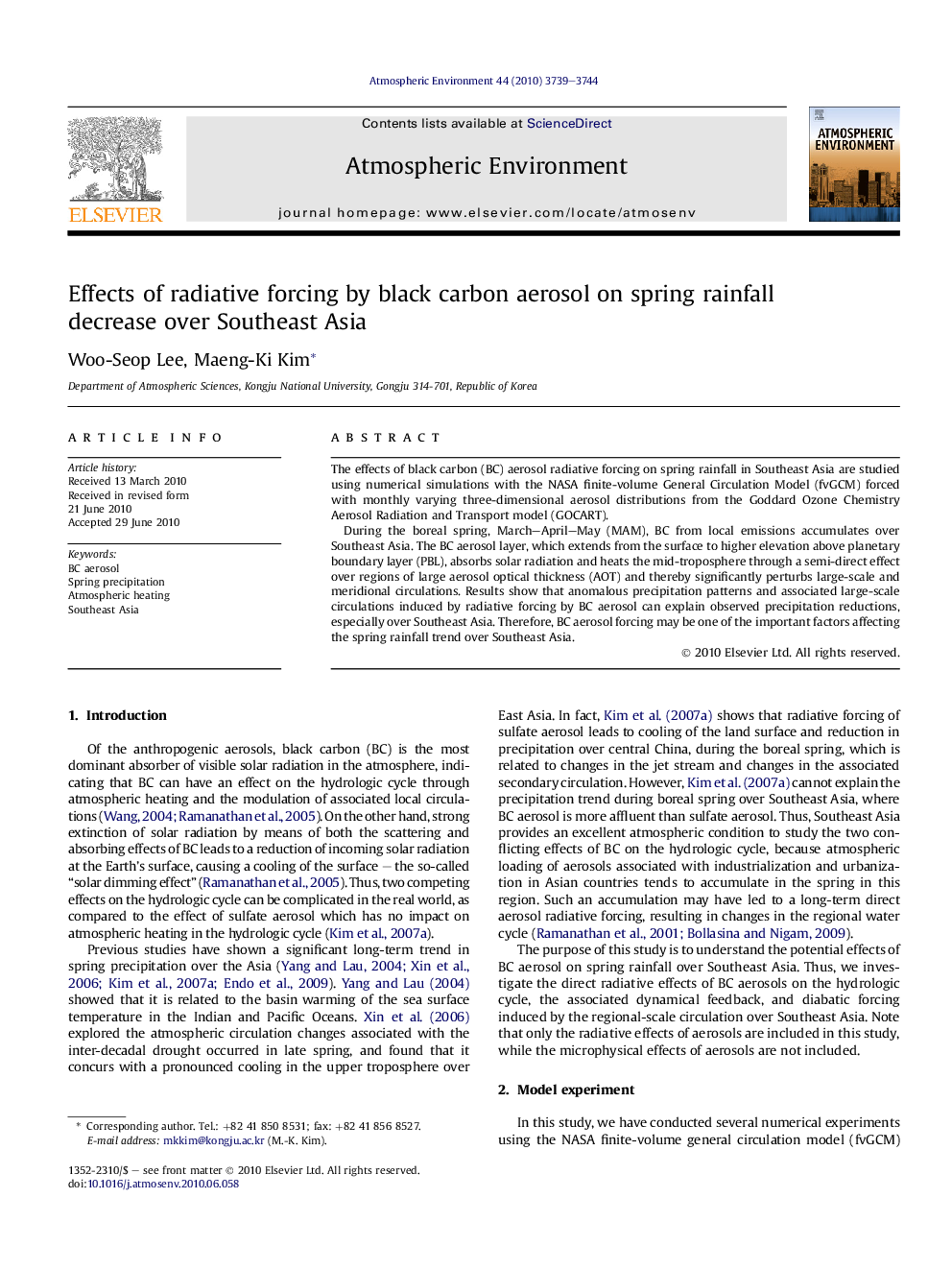| Article ID | Journal | Published Year | Pages | File Type |
|---|---|---|---|---|
| 4440526 | Atmospheric Environment | 2010 | 6 Pages |
The effects of black carbon (BC) aerosol radiative forcing on spring rainfall in Southeast Asia are studied using numerical simulations with the NASA finite-volume General Circulation Model (fvGCM) forced with monthly varying three-dimensional aerosol distributions from the Goddard Ozone Chemistry Aerosol Radiation and Transport model (GOCART).During the boreal spring, March–April–May (MAM), BC from local emissions accumulates over Southeast Asia. The BC aerosol layer, which extends from the surface to higher elevation above planetary boundary layer (PBL), absorbs solar radiation and heats the mid-troposphere through a semi-direct effect over regions of large aerosol optical thickness (AOT) and thereby significantly perturbs large-scale and meridional circulations. Results show that anomalous precipitation patterns and associated large-scale circulations induced by radiative forcing by BC aerosol can explain observed precipitation reductions, especially over Southeast Asia. Therefore, BC aerosol forcing may be one of the important factors affecting the spring rainfall trend over Southeast Asia.
